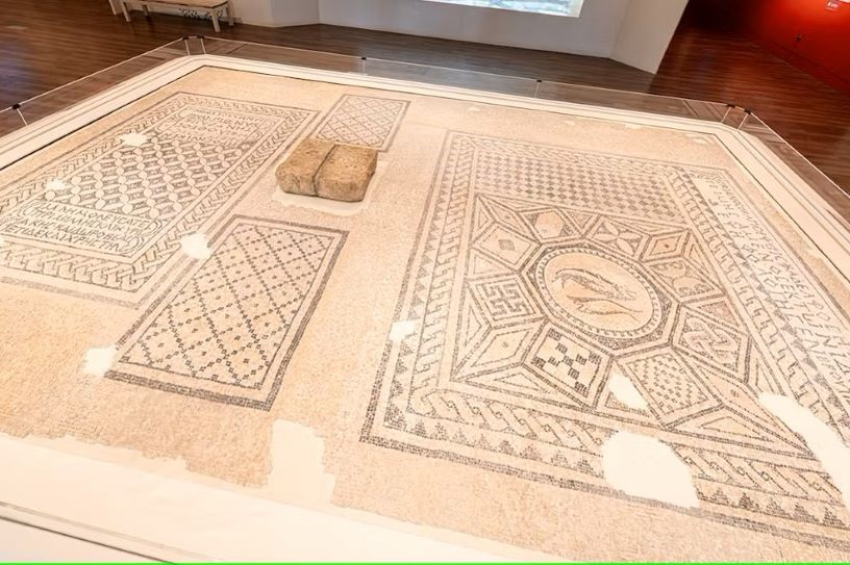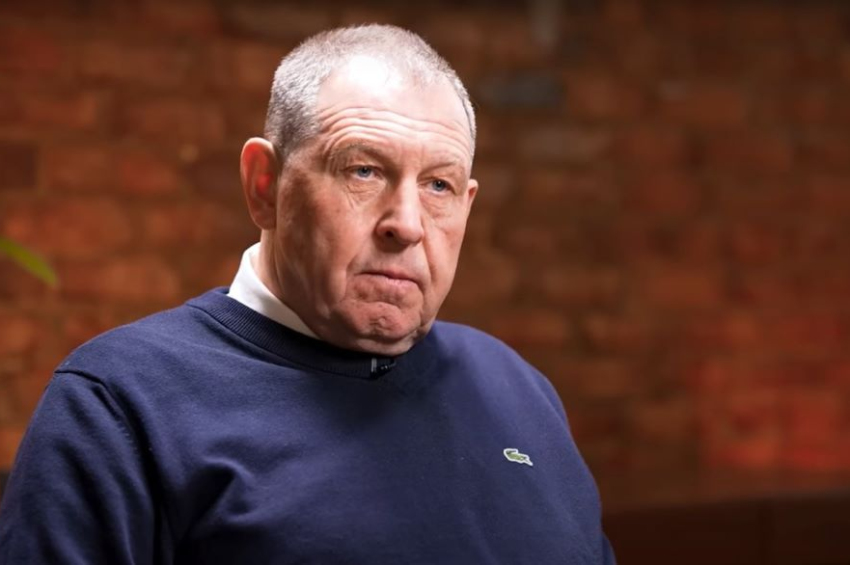Third century mosaic highlights women’s active role in spreading Christianity
An ancient 54-square-meter mosaic believed to be one of the oldest evidences of Christianity made its way last autumn to the Museum of the Bible in Washington DC, U.S., where it will be on public display until July 2025. Dated to 1,800 years ago, the mosaic was discovered accidentally by an inmate at Megiddo Prison in Israel’s Jezreel Valley, in 2005, when he was digging beneath his cell floor while attempting to escape.
Since its discovery, the Israel Antiquities Authority (IAA) has kept it preserved in situ, until it was carefully removed in spring 2024 to be displayed as the centerpiece of an exhibit that explores the realities of early Christianity under Roman rule.
More to read:
Archeologists discover ancient site used by Egyptian pharaoh on march to expand his kingdom
The mosaic used to decorate the floor of a Christian prayer home during the times the faith was still banned in the Roman Empire.

The Megiddo Mosaic. Credit: IAA
It features two fish and a message of gratitude in old Greek to three people who had built the mosaic room for Christian worshipers in the third century AD. The fish are a reference to the story in Luke 9:16, which says Jesus had multiplied two fish to feed a crowd of 5,000 people, the museum specified in a statement.
The inscription refers to Jesus as “the son of God” and contains praise for Akeptous, an important woman in the local community who donated a table for worship; for Roman centurion Gaianus, a likely secret Christian convert who sponsored the mosaic project; and Brutius, an arts worker who created the mosaic design.
The mosaic's inscription also advises readers to remember Primilla, Cyriaca, Dorothea, and Chreste – probably members of the local Christian community – highlighting the role of women in the organization and spread of the faith.

Part of the Megiddo Mosaic. Credit: IAA
According to archeologists and researchers who recovered and reconstructed the mosaic, the prayer home was most likely abandoned by the worshipers due to the deployment of the Sixth Legion in the Judea area. It is assumed that Roman fortifications and camping for troops were erected on the ruins of the Christian site and a prison was built instead during modern times.
By this time in history, Romans and Christians apparently co-existed to some degree, although Christianity was outlawed in the Roman Empire. In practice, the number of followers was growing and rituals occurred somewhat openly. The faith's inclusive message, emphasizing salvation, compassion, and hope, appealed to diverse groups, especially those living in marginalized communities.
More to read:
[video] Archaeologists claim they found a villa where the first Roman emperor died
The spread of Christianity began in the 1st century AD, originating incidentally in Judea, focusing on the teachings of Jesus of Nazareth and his early followers. It gained massive traction through women’s mobilization within local communities and male missionaries, who traveled extensively across the Roman Empire, preaching to people from various ethnic and cultural backgrounds.
Despite periods of persecution, Christianity flourished and ultimately became a force to reckon with. Its legalization came during the reign of Emperor Constantine, who issued the Edict of Milan in 313 AD and became the first Roman emperor to openly embrace Christianity.
More to read:
Nearly 2,220 years ago, Roman women marched to overturn an ancient law
By the 4th century, the religion rose to dominance within the Roman Empire.
It all had begun with synergies like the one created by a woman, a soldier, and an artist in the Jezreel Valley.
***
NewsCafe is an independent outlet that cares about big issues. Our sources of income amount to ads and donations from readers. You can support us via PayPal: office[at]rudeana.com or paypal.me/newscafeeu, or https://buymeacoffee.com/newscafe . Any amount is welcome.







